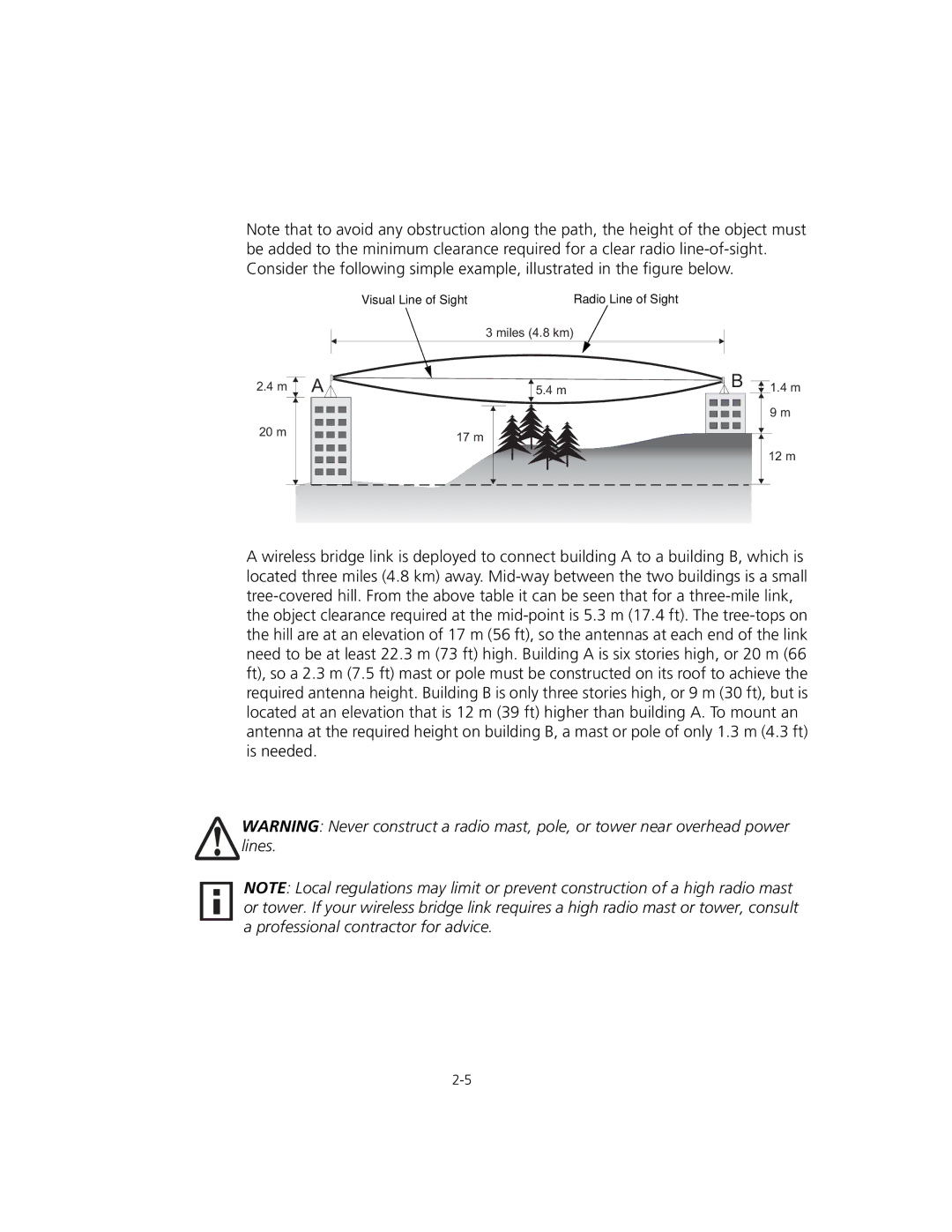
Note that to avoid any obstruction along the path, the height of the object must be added to the minimum clearance required for a clear radio
Visual Line of Sight | Radio Line of Sight |
3 miles (4.8 km)
2.4m
20 m
A![]()
5.4 m
17 m
|
| B |
|
|
| 1.4 m | |
|
|
|
|
| |||
|
|
|
|
|
|
| |
|
|
|
|
|
|
|
|
|
|
|
|
|
|
| 9 m |
|
|
|
|
|
|
| |
|
|
|
| ||||
|
|
|
|
|
|
|
|
|
|
|
|
|
|
|
|
|
|
|
|
|
|
|
|
|
|
|
|
|
| 12 m | |
|
|
|
|
|
| ||
|
|
|
|
|
|
|
|
|
|
|
|
|
|
|
|
A wireless bridge link is deployed to connect building A to a building B, which is located three miles (4.8 km) away.
WARNING: Never construct a radio mast, pole, or tower near overhead power ! lines.
NOTE: Local regulations may limit or prevent construction of a high radio mast or tower. If your wireless bridge link requires a high radio mast or tower, consult a professional contractor for advice.
